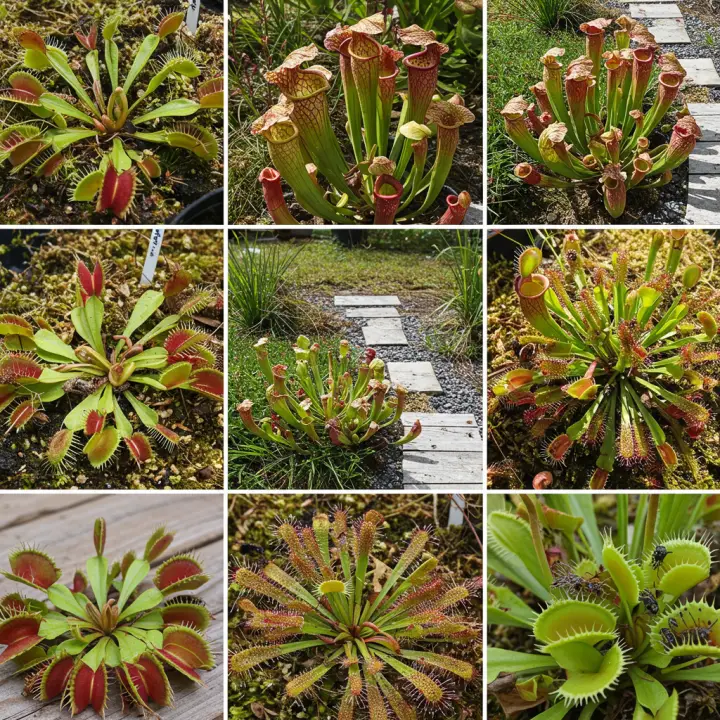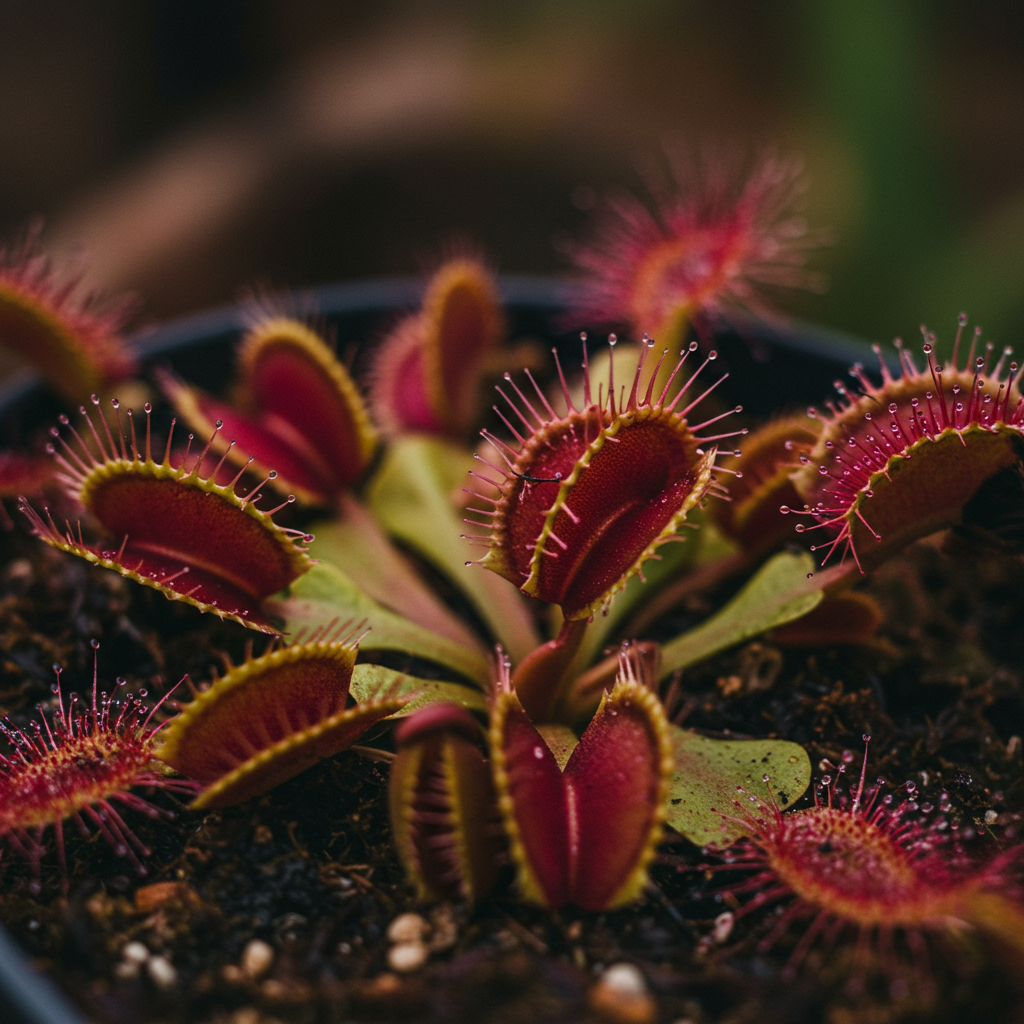Having trouble with garden pests in Florida? Discover the captivating world of insect eating plant for Florida to naturally manage mosquitoes, gnats, and other undesirable insects. From the iconic Venus flytrap to elegant pitcher plants, this guide explores the best carnivorous plant choices perfectly suited for Florida’s unique climate, offering both practical pest control and a fascinating addition to your landscape.

Transform Your Florida Garden with Nature’s Pest Control
Imagine a garden where plants do more than just look beautiful – they actively help keep pests at bay. For Florida gardeners, the dream of natural pest management is attainable with the right insect-eating plants. These botanical wonders not only offer an intriguing aesthetic but also provide an eco-friendly solution to common bug nuisances, thriving in the warmth and humidity that Florida is known for.
Why Choose Insect Eating Plants for Your Florida Home?
Embracing carnivorous plants in your Florida garden offers a unique blend of benefits, making them a wise and wonderful choice for any homeowner.
Natural Pest Control Powerhouses
Forget harsh chemicals! Many insect-eating plants are incredibly efficient at trapping and digesting common Florida pests like flies, mosquitoes, gnats, and even small spiders. They offer a sustainable, chemical-free method to reduce annoying and potentially harmful insect populations around your home.
Unmatched Aesthetic Appeal
Beyond their practical uses, these plants are genuinely stunning. Their vibrant colors, unique shapes, and fascinating trapping mechanisms make them extraordinary centerpieces in any garden or patio. They’re guaranteed conversation starters.
Environmentally Friendly Gardening
By relying on plants for pest control, you’re contributing to a healthier ecosystem. You reduce your carbon footprint and minimize the introduction of pesticides that can harm beneficial insects, local wildlife, and water systems.
The Best Insect Eating Plants for Florida’s Climate
Florida’s subtropical to tropical climate, characterized by high humidity, warm temperatures, and ample sunshine, is an ideal environment for many carnivorous plant species. Here are the top choices that thrive here:
Pitcher Plants (Sarracenia & Nepenthes)
North American Pitcher Plants (Sarracenia): Many Sarracenia species are native to the southeastern United States, making them exceptionally well-suited for Florida. Their upright, trumpet-shaped leaves are natural insect traps.
Sarracenia minor (Hooded Pitcher Plant): Known for its small, hooded pitchers that lure insects with nectar.
Sarracenia flava (Yellow Pitcher Plant): Features tall, elegant yellow pitchers, highly effective at catching larger insects.
Sarracenia leucophylla (White-topped Pitcher Plant): Stunning white and green pitchers with striking red venation. These require a winter dormancy with cooler temperatures, which most of Florida experiences.
Tropical Pitcher Plants (Nepenthes): While some are more demanding, many “lowland” Nepenthes varieties adore Florida’s high humidity and warmth. Their hanging pitchers are truly exotic. They do not require a dormancy period.
Venus Flytraps (Dionaea muscipula)
The iconic Venus flytrap, with its dramatic snapping traps, is surprisingly well-adapted to Florida conditions, especially if given the right care. While not native to Florida (they originate from North and South Carolina), they flourish in similar bog-like environments. They need direct sun and consistent moisture.
Sundews (Drosera)
Sundews are a diverse genus with many species perfect for Florida. Their leaves are covered in glistening, sticky tentacles that trap insects like flypaper.
Drosera capensis (Cape Sundew): A popular and hardy choice, easy to grow and very effective at catching gnats and small flies.
Native Florida Sundews: Several native Drosera species (e.g., D. filiformis, D. intermedia, D. tracyi) are excellent choices and thrive with minimal intervention in appropriate settings.
Butterworts (Pinguicula)
Often overlooked, butterworts are simple yet effective insect eaters. Their flat, succulent-like leaves produce a sticky, dew-like substance that traps small insects like fungus gnats and fruit flies.
Pinguicula lutea (Yellow Butterwort): Native to the Southeast, including Florida, featuring bright yellow flowers.
Pinguicula primuliflora (Primrose Butterwort): Another excellent native choice for Florida, with delicate purple flowers.
Essential Care Tips for Your Florida Carnivorous Plants
To ensure your insect-eating plants thrive in Florida, pay close attention to these critical care requirements:
Water Quality is Key
Carnivorous plants are sensitive to the minerals and salts found in tap water. Always use distilled water, rainwater, or reverse osmosis (RO) water. The “tray method” – placing pots in a tray of standing water – works well for most species.
Light Requirements
Most carnivorous plants, especially those adapted to bog environments, need plenty of direct sunlight. Aim for at least 6+ hours of direct sun daily. Some, like certain Nepenthes and Pinguicula, prefer partial shade during the hottest parts of the day.
The Right Soil Mix
Never use standard potting soil. It’s too rich in nutrients and minerals. A common mix is a combination of sphagnum peat moss (without added fertilizers) and perlite or horticultural sand. This provides the acidic, nutrient-poor environment they prefer.
Embracing Florida’s Humidity
Florida’s naturally high humidity is a huge advantage for most carnivorous plants, eliminating the need for artificial humidifiers. Just ensure good air circulation to prevent fungal issues.
Understanding Dormancy
Temperate carnivorous plants like Sarracenia and Venus flytraps require a winter dormancy period (typically 3-4 months) with cooler temperatures (below 55°F/13°C) and reduced light. During this time, they may appear to die back, but they are simply resting before new growth emerges in spring. Most of Florida experiences sufficient cool temperatures for dormancy.
Feeding is Optional (Mostly)
In an outdoor Florida setting, your insect-eating plants will catch more than enough food on their own. You rarely need to “feed” them. Fertilizer is generally not recommended as it can burn their roots.
Where to Find Your Perfect Insect Eating Plant for Florida
You can typically find insect-eating plants at:
Specialty Nurseries: Look for local nurseries that specialize in rare or carnivorous plants.
Online Retailers: Many reputable online vendors ship healthy plants directly to your door.
Botanical Gardens & Plant Shows: Excellent places to see diverse varieties and connect with experts.
Florida Native Plant Societies: May offer sales or guidance on native carnivorous species.
FAQs About Insect Eating Plants in Florida
Q1: Are insect-eating plants dangerous to pets or humans?
A: No, absolutely not. They are only capable of trapping and digesting insects. They pose no threat to pets or humans and are not poisonous.
Q2: Will these plants attract more bugs to my garden?
A: While they emit scents to lure insects, they generally trap existing pests rather than attracting large swarms of new ones. They help manage existing populations.
Q3: Can I plant them directly into my Florida garden soil?
A: Unless you have a naturally boggy, nutrient-poor, acidic soil environment, it’s generally best to keep them in pots with their specific soil mix. This allows for better control over their growing conditions.
Q4: How often do I need to feed my carnivorous plant?
A: If kept outdoors in Florida, they will catch more than enough insects on their own. Manual feeding is almost never required and can sometimes be detrimental if overdone.
Q5: Do they need special fertilizer?
A: No. Carnivorous plants are adapted to nutrient-poor soils and will be harmed by standard fertilizers, which contain too many minerals. Their “food” comes entirely from the insects they digest.
Conclusion
Embracing an insect eating plant for Florida is more than just adding greenery; it’s about inviting a natural, fascinating, and effective form of pest control into your landscape. With their unique beauty and practical benefits, varieties like Sarracenia* pitcher plants, Venus flytraps, sundews, and butterworts are excellent choices for Florida’s climate. By understanding their specific needs for water, light, and soil, you can cultivate a thriving collection that contributes to a healthier, more intriguing garden. Say goodbye to chemical sprays and hello to the wonders of nature’s own bug zappers!

